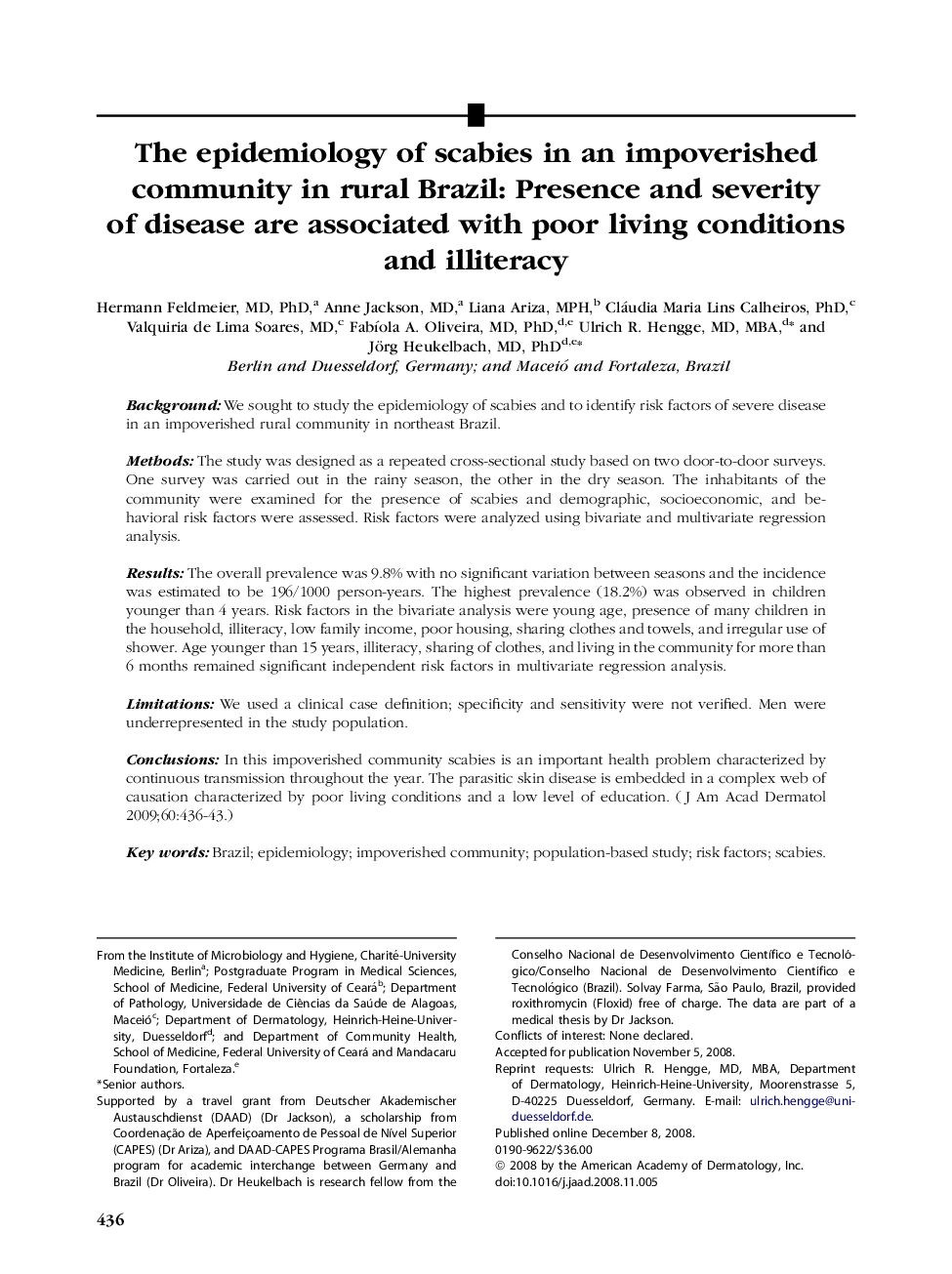| Article ID | Journal | Published Year | Pages | File Type |
|---|---|---|---|---|
| 3209914 | Journal of the American Academy of Dermatology | 2009 | 8 Pages |
BackgroundWe sought to study the epidemiology of scabies and to identify risk factors of severe disease in an impoverished rural community in northeast Brazil.MethodsThe study was designed as a repeated cross-sectional study based on two door-to-door surveys. One survey was carried out in the rainy season, the other in the dry season. The inhabitants of the community were examined for the presence of scabies and demographic, socioeconomic, and behavioral risk factors were assessed. Risk factors were analyzed using bivariate and multivariate regression analysis.ResultsThe overall prevalence was 9.8% with no significant variation between seasons and the incidence was estimated to be 196/1000 person-years. The highest prevalence (18.2%) was observed in children younger than 4 years. Risk factors in the bivariate analysis were young age, presence of many children in the household, illiteracy, low family income, poor housing, sharing clothes and towels, and irregular use of shower. Age younger than 15 years, illiteracy, sharing of clothes, and living in the community for more than 6 months remained significant independent risk factors in multivariate regression analysis.LimitationsWe used a clinical case definition; specificity and sensitivity were not verified. Men were underrepresented in the study population.ConclusionsIn this impoverished community scabies is an important health problem characterized by continuous transmission throughout the year. The parasitic skin disease is embedded in a complex web of causation characterized by poor living conditions and a low level of education.
